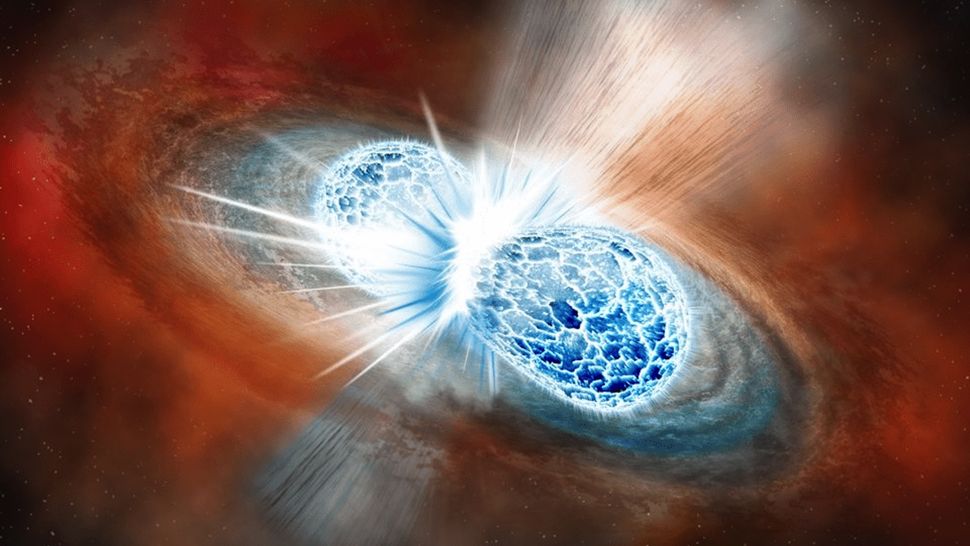Scientists find evidence of 'supernova graveyard' at the bottom of the sea -- and possibly on the surface of the moon
[By Jenna Ahart published 18 hours ago
After finding the debris of two colliding stars swimming in the ocean, researchers are after more evidence from the lunar soil.

an illustration of two stars colliding in a flash of light
An artist's rendering of two neutron stars colliding in a kilonova. (Image credit: NASA)
ANAHEIM, Calif. — The wreckage of some of the universe's most violent explosions has crept closer than you might think; in fact, you may have taken a swim in it during your last dip in the ocean.
By analyzing samples from the deep sea, researchers have found a unique variety of radioactive plutonium that appears to be debris from a rare breed of cosmic explosion called a kilonova, which likely detonated near Earth some 10 million years ago. But proving this explosion's existence will require more evidence, and the researchers think they know where to find it: on the surface of the moon.
"We live in a supernova graveyard," Brian Fields, an astronomer at the University of Illinois Urbana-Champaign, said in a March 17 presentation here at the 2025 American Physical Society Global Physics Summit. "[Supernovas make] tiny specks of rocks that can literally rain upon the Earth. They'll accumulate in the depths of the ocean, and they'll also hang onto the moon."
Fields has theorized about this cosmic rubble since the 1990s. But it wasn't until 2004 that researchers started sifting out supernova remnants from ocean samples. They found traces of a radioactive version of iron that doesn't occur naturally on Earth and can only be explained by a nearby supernova sometime in Earth's recent history.
More:
https://www.livescience.com/space/astronomy/scientists-find-evidence-of-supernova-graveyard-at-the-bottom-of-the-sea-and-possibly-on-the-surface-of-the-moon
